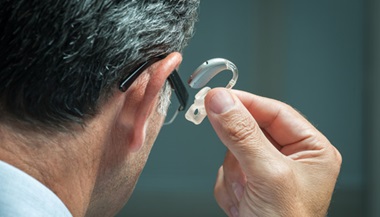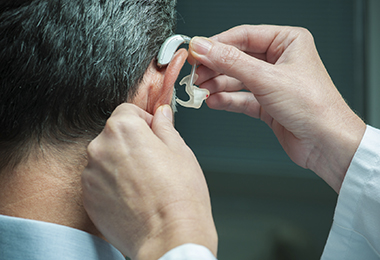Hearing and Speech Communication Services and Devices
What are hearing and speech communication services and devices?
Along with medical intervention and hearing aids, there are many devices and services available to help improve and support communication in daily life. For example, in 1993, the Americans with Disabilities Act began requiring all telephone companies to provide telecommunications relay services. Other services and devices range from telephone amplifiers to visual alarm systems. New devices are portable and can work with cell phones.
What is a telecommunication relay service?
A telecommunication relay service helps persons with a hearing loss or speech impairment communicate with people who have a regular phone, cordless phone, pay phone, or a cell phone. The hearing-impaired person calls another person with the help of a communications assistant (CA). The hearing-impaired person calls using a text telephone (TTY), which the CA then verbally relays to the other caller. The CA then types the person's response back to the TTY caller.
There are two types of telecommunication relay services: voice carry-over (VCO) and hearing carry-over (HCO).
-
With VCO, the caller speaks directly to the other person, but reads the response typed by the CA.
-
With HCO, the caller listens to the other caller, but types his or her response.
The CAs are professional; conversations are relayed word for word and are confidential. Telecommunication relay services are free of charge and may be reached by dialing 7-1-1.
Other assistive communication devices
Some other assistive communication devices for the hearing- or speech-impaired include:
|
Communication Device Type |
Description |
|---|---|
|
Telephone devices for the deaf (TDD) |
TDDs allow the caller to call another person who has a TDD and type messages that are displayed on a visual screen. TDDs come in a variety of models and can also be used with telecommunication relay services. Another telephone device, a telecoil, can be used with certain hearing aids. The telecoil, which is a small magnetic coil in the hearing aid, helps improve sound during telephone calls. |
|
Telephone amplifiers |
Amplifiers that are portable or built into the receiver of the telephone can help increase the volume for the listener. In addition, for those persons who have difficulty hearing the high-pitched ring of the telephone, the sound can be replaced with a lower tone bell or buzzer, or with a visual alert. |
|
Radio, stereo, and television amplifiers |
Instead of turning the radio, stereo, or television up loud, certain devices can connect with hearing aids to directly send the audio signal via a receiver. Whether using headphone devices or wireless devices, these amplifiers allow a hearing-impaired person to listen to radio, stereo, or TV at a comfortable level without interference of background noise. |
|
Signaling devices |
Visual signaling devices can alert a hearing-impaired person to auditory signals he or she cannot hear. Visual signaling devices that flash a light can be purchased for telephones, doors, alarms, baby monitors, and more. Other signaling devices include a vibrating option that can awaken the hearing-impaired person. |
|
Captions for the hearing-impaired |
Captions are the words displayed on a television screen that follow along with the audio portion of the program. Viewers who are hearing-impaired can read the captions to follow the dialogue and action at the same time. Captions also describe sound effects that are important to the story line. Captions can be "open" or "closed." Open captions appear on every television set. Closed captions require a set-top decoder or built-in decoder circuitry. Since closed-caption technology is so widely available now, open-caption technology is rarely used. |





